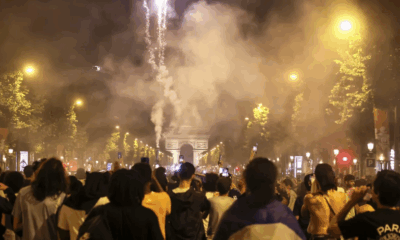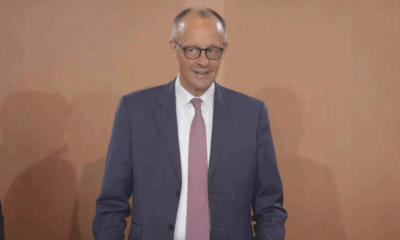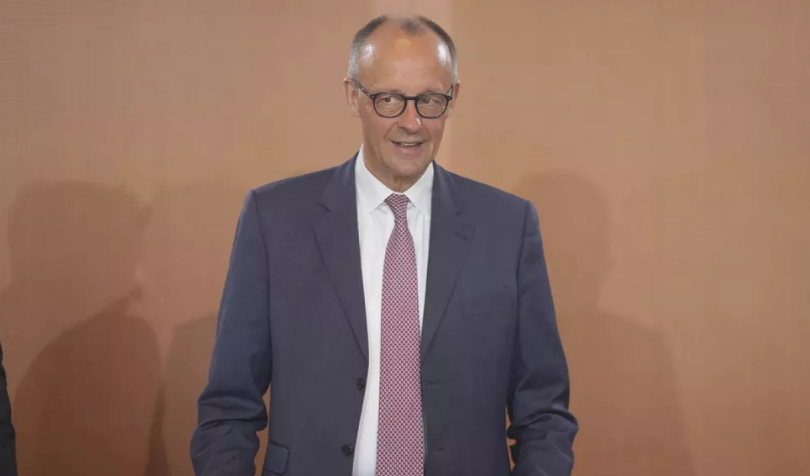News
South Korean Actor Song Jae-lim Found Dead at 39, Sparking Tributes and Renewed Concerns Over Pressures in Entertainment Industry
South Korean actor Song Jae-lim, known for his notable roles in K-dramas and his background in modeling, was found dead in his Seoul apartment on Tuesday. He was 39. Authorities confirmed no signs of foul play, and a note was discovered at the scene, though details have not been disclosed.
Song’s body was reportedly discovered by a friend who had planned to meet him for lunch that day, according to Seoul Seongdong police. A police official stated that the initial investigation found “no signs of criminal activity,” adding that the family had requested not to conduct an autopsy. As a result, the police plan to transfer the deceased to his family’s custody while concluding further inquiries through standard procedures.
Born in 1985, Song transitioned from modeling into acting, making his screen debut in the 2009 film Actresses. His breakout role came in 2012 when he played a royal guard in the popular historical drama Moon Embracing the Sun. He continued to gain fans and reach new heights of fame through his appearance on the reality TV show We Got Married. Most recently, Song completed a run in the musical La Rose De Versailles, which concluded in October.
Following the news of his death, fans and fellow South Korean entertainers shared their condolences on social media. Actor Park Ho-san paid tribute to Song on Instagram, writing, “This is mad… Jae-lim… you were such a cheerful guy… I can’t believe this. I’m so sorry for not contacting you or caring for you enough.” Similarly, actor Hong Seok-cheon expressed his grief, writing, “I’m sad that I can’t see your wonderful smile again… I’m so sorry, rest in peace.”
Song’s final posts on his Instagram account, where he shared two selfies in January, have since garnered over 61,000 likes. Comments on his account remain disabled, but fans have continued to share memories of his work across social media.
The untimely passing of Song has reignited discussions around mental health challenges in South Korea’s entertainment industry, which has seen similar tragedies in recent years. ASTRO’s Moon Bin, K-pop star and actor, died last year at the age of 25, while actress and singer Sulli passed away in 2019, also at 25. In 2017, SHINee member Kim Jong-hyun died at 27, bringing global attention to the mental health pressures faced by many K-pop and K-drama stars.
Although South Korean entertainment agencies have introduced support measures, including counseling services and adjusted schedules, observers and experts note that the industry’s competitive nature, combined with intense public scrutiny and relentless expectations of perfection, contribute to the mental health challenges these artists face.
Song Jae-lim’s death has once again underscored the ongoing need for robust mental health support systems within South Korea’s entertainment industry, where the stakes remain high, and stars often grapple with the weight of fame in solitude.
News
Two Dead, Nearly 200 Injured as PSG Title Celebrations Turn Violent Across France

What began as jubilant celebrations of Paris Saint-Germain’s historic UEFA Champions League victory ended in violence and tragedy in parts of France, with two people killed and nearly 200 injured during street festivities that spiraled out of control.
Authorities confirmed on Sunday that a 17-year-old boy was fatally stabbed in the southwestern town of Dax during a PSG street gathering, while in Paris, a man died after his scooter was struck by a car amid the crowded celebrations. Both incidents are currently under investigation.
The unrest followed PSG’s dramatic win in Munich, where the club secured its first-ever Champions League title, marking a milestone in French football history. While fans across the country took to the streets to celebrate, several areas descended into violence.
According to the French Interior Ministry, a total of 294 people were arrested nationwide as of 2 a.m. Sunday. Of the nearly 200 injured, 21 were police officers—18 of them in Paris alone. One officer remains in a medically induced coma after being struck in the face by a firework.
Interior Minister Bruno Retailleau condemned the violence in a statement on social media. “True PSG fans are celebrating a magnificent achievement. Meanwhile, barbarians have taken to the streets to commit crimes and provoke law enforcement,” he said. “It is unacceptable that people cannot celebrate without being endangered by a violent minority.”
Despite the unrest, the majority of gatherings were peaceful, authorities noted, with large crowds celebrating the historic win in cities including Marseille, Lyon, and Lille.
The PSG squad returned to Paris from Munich on Sunday afternoon aboard a Qatar Airways charter flight, arriving at 4 p.m. The team is expected to continue celebrations in the capital with tens of thousands of fans, under heightened security measures.
The violent turn of events has reignited debate in France over crowd control during major sporting celebrations, and how best to ensure public safety without dampening national enthusiasm.
PSG’s Champions League triumph marks a defining moment for the club, which has long pursued European glory. As the team prepares for a hero’s welcome, officials are urging fans to celebrate responsibly and respect public safety.
News
Ukraine Launches Major Drone Assault on Russian Airfields, Hits Over 40 Strategic Bombers

Ukraine’s Security Service (SBU) has claimed responsibility for a large-scale drone strike on four Russian air bases over the weekend, targeting dozens of strategic bombers across vast swaths of Russian territory — from Siberia to the Arctic.
According to Ukrainian officials, the operation, codenamed “Spiderweb” (Pavutyna), was launched on June 1 and struck 41 long-range bombers stationed at airfields in Russia’s Ryazan, Ivanovo, Irkutsk, and Murmansk regions. The attack is being hailed by Kyiv as one of its most ambitious and far-reaching strikes since the beginning of Russia’s full-scale invasion.
“Enemy strategic bombers are burning en masse in Russia,” a senior SBU official said, noting that the operation was specifically designed to cripple Moscow’s airstrike capabilities. “This is a large-scale special operation aimed at destroying enemy bomber aircraft.”
The four airfields targeted were Dyagilevo in the Ryazan region, Ivanovo in central Russia, Belaya air base in Irkutsk — over 4,000 kilometers from the front lines — and Olenya air base on the Kola Peninsula near the Arctic, roughly 2,000 kilometers from Ukraine’s border.
Ukrainian officials described the complex logistics of the operation, which involved covertly transporting drones deep into Russian territory, hiding them until the time of launch, and remotely executing the strikes. While specific details remain classified, Ukraine previously revealed it had developed drones with a flight range of up to 3,000 kilometers, enabling long-range operations like this.
Satellite imagery analyzed after the attack shows the presence of several high-value Russian aircraft types at the affected bases, including the Tu-95, Tu-22M3, Tu-160, and A-50 radar planes. These aircraft have been central to Russia’s long-range missile campaign against Ukraine.
The Tu-22M3, for example, is capable of carrying Kh-22 and Kh-32 cruise missiles at speeds exceeding Mach 4. The Tu-95, a Cold War-era bomber once designed to carry nuclear weapons, has been retrofitted to launch conventional cruise missiles. The A-50 aircraft provides airborne radar surveillance and target coordination for Russian forces.
The scale of the strike underscores Ukraine’s growing long-range capabilities and signals a shift in Kyiv’s strategy to disrupt Russian air operations at their source. President Volodymyr Zelenskyy said he had held meetings with the Ministries of Defense and Foreign Affairs, along with the General Staff and SBU, to coordinate further defense and counter-offensive planning.
There has been no immediate official response from Moscow regarding the extent of damage caused.
News
German Chancellor Merz to Meet President Trump in Washington Amid Global Tensions
-

 Business1 year ago
Business1 year agoSaudi Arabia’s Model for Sustainable Aviation Practices
-

 Business1 year ago
Business1 year agoRecent Developments in Small Business Taxes
-

 Politics1 year ago
Politics1 year agoWho was Ebrahim Raisi and his status in Iranian Politics?
-

 Business11 months ago
Business11 months agoCarrectly: Revolutionizing Car Care in Chicago
-

 Business11 months ago
Business11 months agoSaudi Arabia: Foreign Direct Investment Rises by 5.6% in Q1
-

 Technology1 year ago
Technology1 year agoComparing Apple Vision Pro and Meta Quest 3
-

 Politics1 year ago
Politics1 year agoIndonesia and Malaysia Call for Israel’s Compliance with ICJ Ruling on Gaza Offensive
-

 Sports10 months ago
Sports10 months agoKeely Hodgkinson Wins Britain’s First Athletics Gold at Paris Olympics in 800m






























